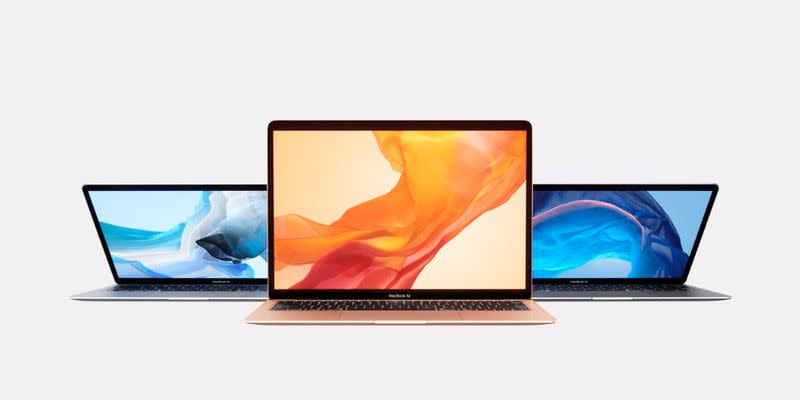Apple's New Macs Are the Ones You've Been Waiting on For Years

Today, at an event in Brooklyn, Apple trotted a new, redesigned version of its iPad Pro, but the biggest stars of the show may have been its twin updates to the Mac computer line: The Retina Macbook Air and the new Mac Mini. Why so exciting? Because we've been waiting for them for years.
At its 2012 World Wide Developer's Conference (WWDC), Apple took the snazzy "Retina" displays it had recently introduced on the iPhone 4 and iPad and slapped them on a laptop to terrific effect. The Macbook Pro with Retina, while prohibitively expensive, put other Mac screens to shame. Meanwhile, the Retina-less Macbook Air was settling into its spot as Apple's best computer for average people, thanks to its mix of portability, power, and a modest price. Apple lovers began to dream of the ultimate laptop: the Retina Macbook Air.
But then, nothing. For the next six years a Macbook Air failed to materialize. Apple made a false start in 2015 when it announced the new "Macbook," which was smaller and lighter than the Air, and had the Retina screen, but came with innards that left it lacking in performance compared to the trusty Air and a keyboard that rendered it virtually unusable. As the years rolled on, Apple quietly retired the 11-inch Macbook Air, keeping its 13-inch brother on life support with cursory spec bumps.
Now, in the Year of Our Lord 2018, the Retina Macbook Air is upon us. The newly announced laptop is essentially a Macbook Pro's guts in a Macbook Air's body. The new Air has the Retina screen as well as Touch ID for login, some USB Type-C ports, an 8th-generation Intel chip, and up to 16GB of RAM, all of which are welcome additions (the third generation of Apple's less-than-stellar butterfly keyboard and a price bump to $1,200, less so).
For what it's worth, the non-Retina Macbook Air still survives. It comes with a low-res screen, but also with the shining distinction of being Apple's only laptop that can come in at a price below $1,000. That is, unless you consider the $980 11-inch iPad Pro in combination with a keyboard to be an effective laptop replacement, which seems to be Apple's plan for the lower end of the laptop market.
Apple's other blast from the past is a new Mac Mini. The Mini is the tiny little computer box you can set on your desk and hook up to a monitor and keyboard to use as a somewhat affordable Mac desktop. It's okay if you've forgotten, because the last one came out back in 2014 and was saddled with a whole host of changes that rendered it arguably less useful than its 2012 predecessor.

The new Mac Mini carries a quad-core version of Intel's 8th-generation chips (with an option to upgrade to a six-core version), making it, as Apple notes, five times more powerful than the previous generation of Mac Mini, which is not much of a feat. Despite its almost identical appearance to its forebears, the new Mac Mini can support as much as 2TB of built-in storage space and support up to 64 GB of RAM, which means that while the entry-level model goes for $800, you could, in theory, buy a tricked-out Mini for $4,200.
Apple's return to its old, languishing product lines does not mean the company has run out of ideas. Rather, it was time for rethinking what these devices are and who they are for. Last year, the iPhone X established a new norm of $1,000 iPhones. That price point allowed this year's iPhone XR to sneak in underneath, looking inexpensive by comparison despite costing as much as flagship iPhones always have. The new $1,200 Macbook Air Retina could have a similar effect, allowing the 11-inch iPad Pro and Keyboard to take up the mantle of the once-affordable Macbook Air.
The gadgets we've been awaiting for years are finally here. Apple is betting big that people will still want them.
('You Might Also Like',)


